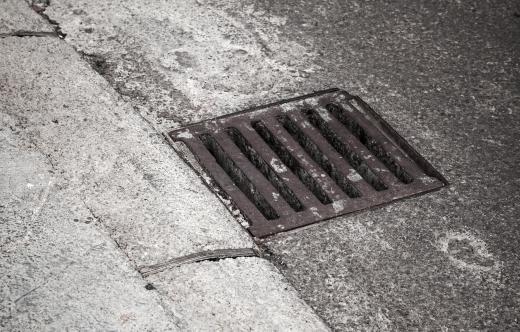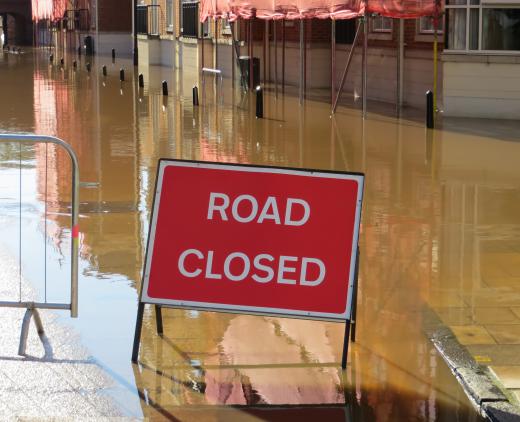Storm drainage is any system which is designed to drain excess rain or flood water from urban catchment areas. These systems typically consist of networks of gutters, channels, and subterranean pipes which collect the excess water that collects on roofs, roads, parking lots and sidewalks during storms. This influx of storm water is then either introduced into the area's sanitary sewer system or into dedicated storm drainage.
Storm water runoff in urban areas has always been a problem in urban areas, and drainage systems have been an integral part of city planning and architecture for thousands of years. For example, the runoff from a one acre parking lot is approximately 16 times that of a similarly sized meadow. The runoff figures for an average sized city are staggering and require an effective storm drainage system to prevent constant destructive flooding. Runoff water is also often as dangerous as raw sewerage with the cocktail of trash, fuel, oil, fertilizers, pesticides, and heavy metals that it gathers in urban catchment areas. This requires storm drainage to be environmentally safe as well as effective at removing the water.

These drainage systems generally fall into two categories. The first sees the runoff removed via an existing sewerage system. The second utilizes a dedicated arrangement of pipes or canals which keeps rain water separate from the sewerage circuit. Both utilize a system of drain points throughout the catchment area which collect the runoff from roofs, sidewalks, roads, and parking lots. These drain points are typically situated in the face of a curb or flat on the catchment surfaces.

Curbside drains usually rely on the convex profile of the road surface to direct storm water to the drain. Flat drains are typically located in purpose designed depressions which channel runoff into them. Both will usually feature some sort of trap immediately under the inlet to remove sediment and flotsam and to prevent the egress of sewer gas and rodents. From these drain points, the storm water will then enter either the sewer or a dedicated storm drainage system.

Combined sewers are generally unable to accommodate both the regular flow of effluent and storm water during heavy rains and rely on storage tanks and ponds to handle sudden influx of water. For this reason, dedicated storm drainage systems are considered better options; combined sewers are usually only found in areas where systems were installed prior to the 1930s. Dedicated systems vent runoff into the sea, rivers, and lakes or into dry wells and retention ponds. As water from these systems returns to the water table untreated, they often feature drain point grills emblazoned with messages discouraging people from dumping any waste into the drains.
The protection of the environment from contamination from storm water is now becoming a major concern for many authorities; storm drainage policies are constantly being revised as a result. These revisions include permeable catchment surfaces which allow some runoff to soak into the soil prior to entering the system. Improved separation techniques for removing dangerous waste from storm water are also being instituted to keep the environmental impact of storm drainage to a minimum.
